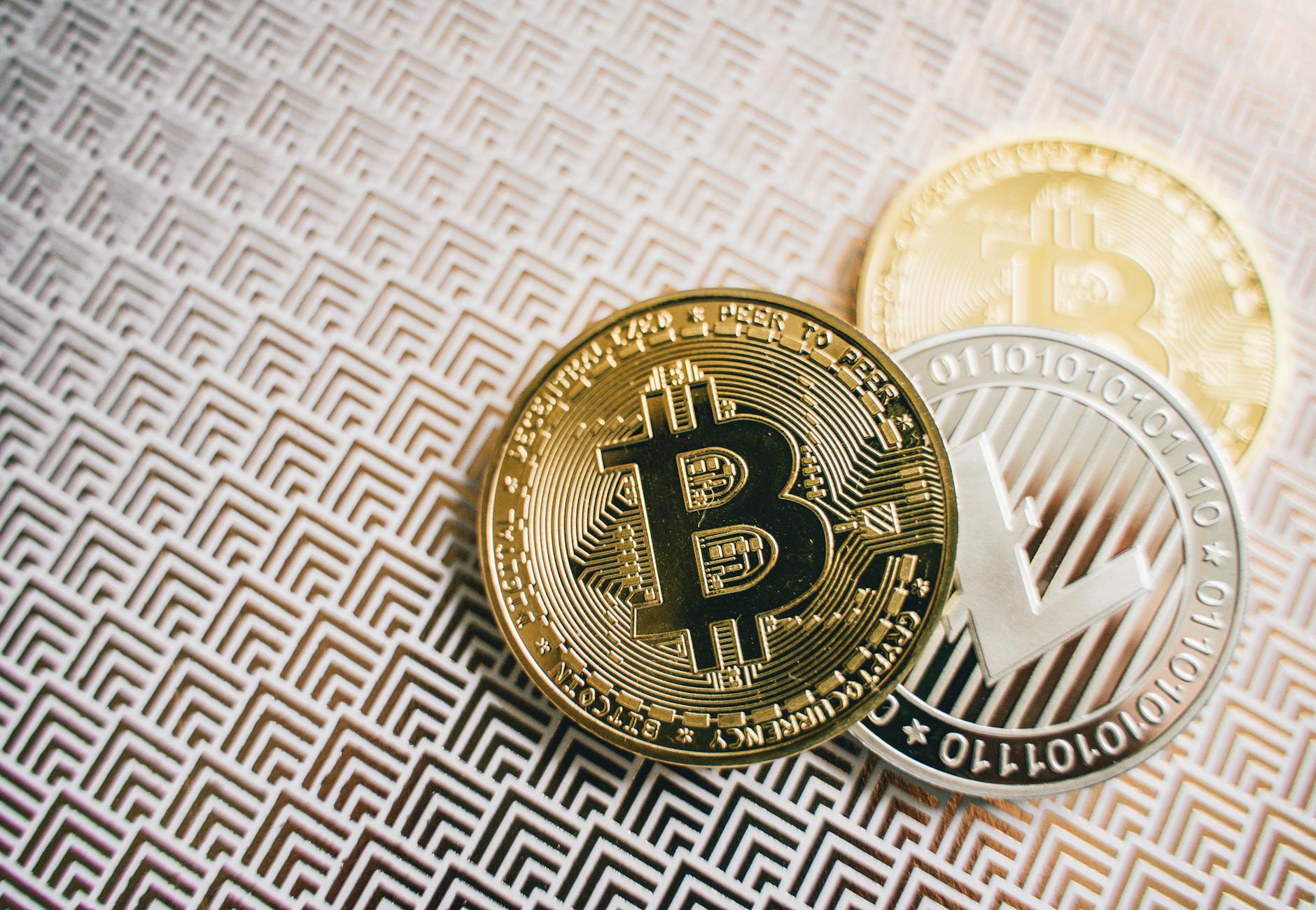Visa Expands Stablecoin Crypto Payments: Banks Tap $140B Cross-Border Flow
- Get link
- X
- Other Apps

Visa Deepens Crypto Payments: Banks Tap Into $140B Stablecoin Flow
📌 Visa's Expanding Stablecoin Embrace: A New Era for Crypto Payments
🔗 In a significant move signaling the maturation of the cryptocurrency market, Visa has announced an expansion of its stablecoin support.
The credit card giant is integrating four new stablecoins across four different blockchains, solidifying its commitment to crypto payments. This development, revealed during Visa's Q4 2025 earnings call, underscores the rapid growth of stablecoin-linked card spending, which has reportedly quadrupled year-over-year.
This surge in activity indicates a broader acceptance and utilization of tokenized money within established payment infrastructures. The numbers tell a compelling story: a massive inflow of crypto and stablecoin transactions processed through Visa’s rails.
Historical Context and Current Landscape
🔗 Visa's increasing involvement in the crypto space marks a notable evolution from the skepticism that once surrounded digital assets. Since 2020, Visa has processed over $140 billion in crypto and stablecoin flows, demonstrating the growing importance of digital assets in the global financial system. Of that figure, $100 billion was directly linked to card purchases of digital assets, while $35 billion came from spending of digital assets using Visa cards. This transformation reflects the increasing integration of blockchain technology with traditional finance, driven by the demand for faster, cheaper, and more transparent payment solutions.
📌 Stablecoin Settlement Platform Reaches $2.5 Billion Run Rate
Visa's stablecoin settlement platform is now facilitating conversions between two currencies and over 25 fiat currencies.
The platform boasts an impressive annualized volume of $2.5 billion, showcasing the increasing utility and adoption of stablecoins for real-world transactions.
🔗 "We are adding support for four stablecoins running on four unique blockchains, representing two currencies that we can accept and convert to over 25 traditional fiat currencies," stated Visa CEO Ryan McInerney during the Q4 earnings call.
📌 Empowering Banks with Stablecoin Capabilities
💧 Visa is not just facilitating stablecoin transactions; it's also empowering banks to participate directly in the digital asset ecosystem.
By providing banks with tools to mint and burn their own stablecoins on Visa's Tokenized Asset Platform, the company is enabling more flexible and efficient liquidity management.
💧 These features aim to address challenges such as payment delays, price volatility, and high costs associated with cross-border transfers, particularly in regions where traditional fiat rails are inefficient or expensive. The introduction of pre-funding options for Visa Direct further enhances liquidity and streamlines remittance processes.
📌 Key Stakeholders and Network Expansion
🔗 Visa's stablecoin partners include notable players like Paxos, with support for USDG and PYUSD on prominent blockchains such as Stellar, Avalanche, Ethereum, and Solana.
The company now supports more than 130 stablecoin-linked Visa card programs across 40 countries, bridging the gap between blockchain technology and everyday financial transactions.
This extensive network allows wallets and cards to interact seamlessly with tokenized balances, unlocking new possibilities for consumers and businesses alike. The ease of integration is a critical driver of adoption, simplifying access to digital assets for a broader audience.
📌 Consulting Services and Enhanced Security
⚖️ Visa's commitment extends beyond infrastructure to include consulting services, assisting clients in establishing stablecoin setups and integrating them into their broader Visa-as-a-Service offerings.
The company is also leveraging tokenization for payments and employing AI-driven fraud checks to enhance security and protect both traditional and crypto-linked transactions.
⚖️ With over 16 billion tokens now powering parts of the e-commerce transaction system, Visa is demonstrating the scalability and reliability of its platform. These security measures are essential for fostering trust and encouraging wider adoption of digital payment solutions.
📌 Market Impact Analysis: Remittances, B2B Transfers, and Gig Economy
Industry analysts believe that Visa's stablecoin initiatives are primarily targeting remittances, B2B transfers, and instant payouts for gig workers.
By offering pre-funded rails and local stablecoin issuance, Visa aims to significantly reduce the cost and time associated with cross-border transfers.
This move could have a profound impact on the global economy, facilitating faster and more efficient transactions for businesses and individuals alike. The reduced friction and increased transparency of stablecoin payments could unlock new opportunities for economic growth and financial inclusion.
| Stakeholder | Position | Impact on Investors |
|---|---|---|
| Visa | Pro-Stablecoin Integration | 📈 Increased adoption and utility of stablecoins |
| Banks | Enabling Stablecoin Issuance | 🆕 New revenue streams, faster transactions |
| Stablecoin Issuers (e.g., Paxos) | Expanding Network Reach | 💰 Greater liquidity, wider market access |
📌 🔑 Key Takeaways
- Visa is significantly expanding its support for stablecoins, indicating a growing acceptance of crypto payments within the traditional financial system. This integration is likely to drive further adoption and utility of stablecoins for everyday transactions.
- The company's stablecoin settlement platform is now handling a substantial volume of transactions, with an annualized run rate of $2.5 billion. This demonstrates the increasing viability of stablecoins for cross-border payments and other financial applications.
- Visa is empowering banks to issue their own stablecoins, providing them with new opportunities to participate in the digital asset ecosystem. This could lead to increased innovation and competition in the payments industry.
- Visa is actively working to enhance the security and compliance of stablecoin payments, which is essential for fostering trust and encouraging wider adoption. This includes leveraging tokenization and AI-driven fraud checks.
- The expansion targets remittances, B2B transfers, and gig worker payouts, potentially reducing costs and times for cross-border transactions.
The Visa announcement isn't just another headline; it's a watershed moment for stablecoins. From my vantage point, the most profound implication is the potential for widespread financial inclusion. By streamlining remittances and B2B payments, Visa is effectively lowering barriers to entry for individuals and businesses previously excluded from traditional financial systems. Consider the ripple effect: access to capital increases, economic activity surges, and emerging markets experience unprecedented growth. The move also serves as an implicit endorsement of well-regulated stablecoins, like PYUSD. Look for other major financial players to follow suit in the next 12-18 months, further legitimizing the asset class. The real game-changer will be when central banks start incorporating these stablecoins into their own digital currency strategies. This integration could redefine the future of money as we know it.
- Closely monitor the adoption rates of USDG and PYUSD on Stellar, Avalanche, Ethereum, and Solana, as these could be leading indicators of broader stablecoin integration and adoption.
- Evaluate traditional financial institutions that are partnering with Visa on stablecoin initiatives, as these companies may experience increased growth and profitability as a result of this collaboration.
- Explore opportunities in the remittance and B2B payment sectors, as stablecoin-based solutions are poised to disrupt these industries and create new investment opportunities.
- Factor in the potential impact of central bank digital currencies (CBDCs) on the stablecoin market, as their development and integration could significantly influence the competitive landscape.
Tokenized Asset Platform: A platform that allows for the creation, management, and transfer of digital representations of real-world assets on a blockchain.
Fiat Currencies: Government-issued currencies that are not backed by a physical commodity, such as gold or silver.
— Milton Friedman
Crypto Market Pulse
October 29, 2025, 22:10 UTC
Data from CoinGecko
| Date | Price (USD) | Change |
|---|---|---|
| 10/23/2025 | $0.2694 | +0.00% |
| 10/24/2025 | $0.2734 | +1.47% |
| 10/25/2025 | $0.2757 | +2.35% |
| 10/26/2025 | $0.2709 | +0.55% |
| 10/27/2025 | $0.2817 | +4.58% |
| 10/28/2025 | $0.2739 | +1.67% |
| 10/29/2025 | $0.2694 | -0.01% |
| 10/30/2025 | $0.2751 | +2.13% |
▲ This analysis shows FLOW's price performance over time.
This post builds upon insights from the original news article, offering additional context and analysis. For more details, you can access the original article here.

